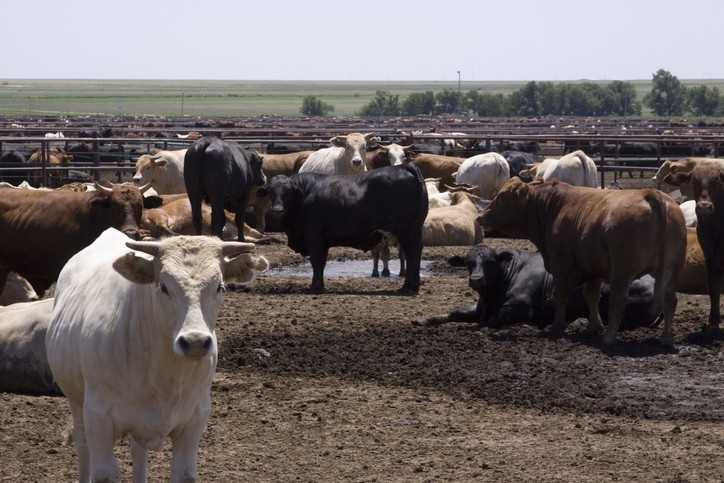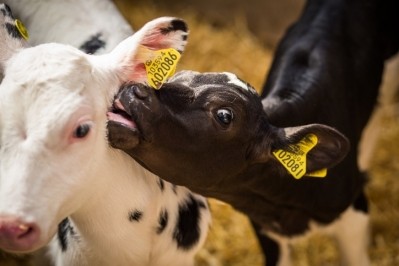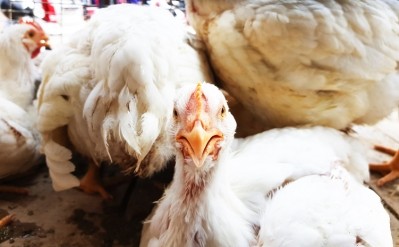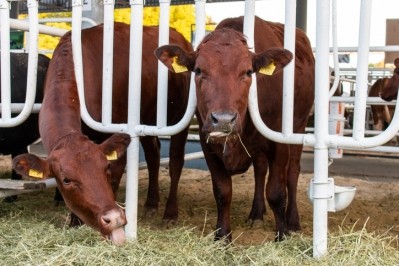Essential oil blends may boost performance, feed intake in feedlot heifers

A team of researchers from the State University of Maringa and the University of Zaragoza in Brazil explored the use of several essential oils and blends of essential oils in the diets of feedlot-finished heifers.
The group published its work in the journal Livestock Science.
“This study was carried out to evaluate the effects of essential oils and their blends as an antimicrobial alternative in the finishing phase for feedlot cattle,” the researchers said. “Animal performance (gain, feed intake, feed efficiency), carcass characteristics, in situ digestibility, and ingestive behavior activities were examined for Nellore heifers supplemented with (without) essential oils over a 73-day feeding period.”
The researchers found average daily gain and dry matter intake were improved for heifers receiving diets supplemented with a blend of eugenol, thymol and vanillin (BLE), a blend of clove essential oil and the BLE mix (BCL) or rosemary and clove essential oils with BLE (BRC) when compared to cows receiving diets with rosemary essential oil (ROS).
However, results for final body weights and carcass characteristics were similar for cows on all diets, they said.
“In situ digestibility of dry matter and neutral detergent fiber were greater in heifers fed the three blended diets when compared to heifers fed the ROS diet.
“The addition of 4 g/animal/d of a blend of essential oils to the diets of Nellore heifers improved average daily gain, dry matter intake, feed efficiency, and ingestive behavior activities,” they said.
Trimming antibiotic use
Traditionally, beef production in Brazil used a pasture-based system, the researchers said.
However, increases in beef demand for the domestic and export markets have expanded interest in intensive production practices and the feeding of concentrate-based diets.
When animals and cattle are raised intensively, it was common practice to use antibiotics to prevent disease, boost feed efficiency and reduce metabolic disorders, they said. Antibiotic use, however, has been banned or reduced in some areas based on concerns about antibiotic-resistant bacteria and potential risks to human health.
As production uses of antibiotics are limited, interest in alternative products has increased, they said.
“The livestock industry is seeking alternative solutions, including the use of essential oils as a potential alternative/substitute for antibiotics to improve cattle performance."
Why essential oils?
Essential oils are aromatic extracts derived from plant materials including buds, seeds, leaves, flowers, bark, fruits, roots or wood of a plant, the researchers said.
They can be generated using fermentation, steam distillation and extraction techniques.
“Chemically, essential oils are variable mixtures of terpenoids that primarily include monoterpenes (C10) and sesquiterpenes (C15), although diterpenes (C20) may also be present,” they said. “They also include a variety of low-molecular-weight aliphatic hydrocarbons, acids, alcohols, aldehydes, acyclic esters, or lactones. Other compounds found in essential oils include coumarins and homologues of phenylpropanoids.”
Elements within the plant-derived oils may have antimicrobial and antioxidant properties, they said. Previously, some essential oils have been linked to improved immune and digestive performance in production animals.
Stemming from past in vitro research showing that select essential oils can have antimicrobial activity against microflora in the gastrointestinal tract, there has been interesting in using the oils as alternatives for antibiotics, the researchers said.
“There has been limited research to date since the actions of essential oils are dependent on their chemical composition, the doses used, and the synergistic effects among chemical compounds in the oils,” they said.
Feeding trial details
In the feeding trial, 40 heifers received one of five trial diets for a period of 73 days, the researchers said. In addition to the essential oils diets included corn grain and silage and soybean meal.
“Dietary treatments based on essential oil additives included: CON – Without essential oil; ROS – Rosemary essential oil; BLE – Protected blend of eugenol, thymol, and vanillin; BCL – Protected blend + clove essential oil; and BRC – Protected blend + rosemary essential oil + clove essential oil,” they said. The oils used were commercially available.
Diets and ingredients were analyzed to check for elements including dry matter, ash content, nitrogen concentration, crude protein levels, ether extract, neutral detergent fiber (NDF), acid detergent fiber (ADF), total carbohydrates and metabolizable energy, they said.
Heifers were weighed monthly and at the start and end of the feeding trial and average daily gain was calculated, they said. Feed intake and efficiency were determined and in situ total digestibility was established.
Heifers were harvested at the end of the trial and carcasses were examined for cold carcass weight, dressing percentage and tissue composition, the researchers said.
Additionally, observations about feeding behavior were collected during the feeding trial, they said. “Data were collected to estimate the duration of periods spent feeding, drinking, ruminating, and idle,” they added.
Results
Final body weights were similar for all cows, but tended to be slightly higher for cows on the BLE, BCL and BRC diets, the researchers said.
“The best values for feed efficiency in heifers were found for diets with blends of essential oils, due to a possible synergism from mixing essential oils,” they said. “This effect was probably due to a ruminal environment appropriate (pH 5.5), promoted by highly concentrate diets, providing the best activity/ action of the molecules present in each essential oil, which reflects positively on animal production.
Cows on the BCL and BRC diets had better average daily gain than those on the control diet or receiving only rosemary essential oil, they added.
“The ROS dietary treatment had the lowest dry matter intakes (DMI) and feed efficiency when compared to the other essential oil treatments,” the researchers said. “While the lowest feed efficiency was found in heifers fed the ROS diet, there were no differences in feed efficiency between heifers fed the CON and BLE diets.”
Hot and cold carcass weights, dressing percentages and carcass shrimp were similar for all cows, they said. Body composition traits also showed little variation regardless of diet.
However, adding the essential oils did alter in situ digestibility of dry matter and NDF and some behaviors, they said. Cows receiving ROS-supplemented feeds saw worse results those heifers on other diets.
Overall, the results suggest that a blend of natural additives supports or improves animal performance, they said. “Blends like BCL and BRC improve the gains and feed efficiency, while blend BLE improves the feed intake,” they added.
“Use of rosemary essential oil on its own tended to decrease animal performance; this contrasts to improvements in animal performance when rosemary essential oil is added to the diet as a blend of essential oils,” the researchers said. “The blend of clove essential oil (2 g/animal/d) and protected oils [eugenol, thymol, and vanillin (2 g/animal/d)] proved to be promising for improving animal performance.”
Source: Livestock Science
Title: Effects of diet supplementation with clove and rosemary essential oils and protected oils (eugenol, thymol and vanillin) on animal performance, carcass characteristics, digestibility, and ingestive behavior activities for Nellore heifers finished in feedlot
Authors: K. deSouza, J. Monteschio, C. Mottin, T. Ramos, L. Pinto, C. Eiras, A. Guerrero, I. do Prado















